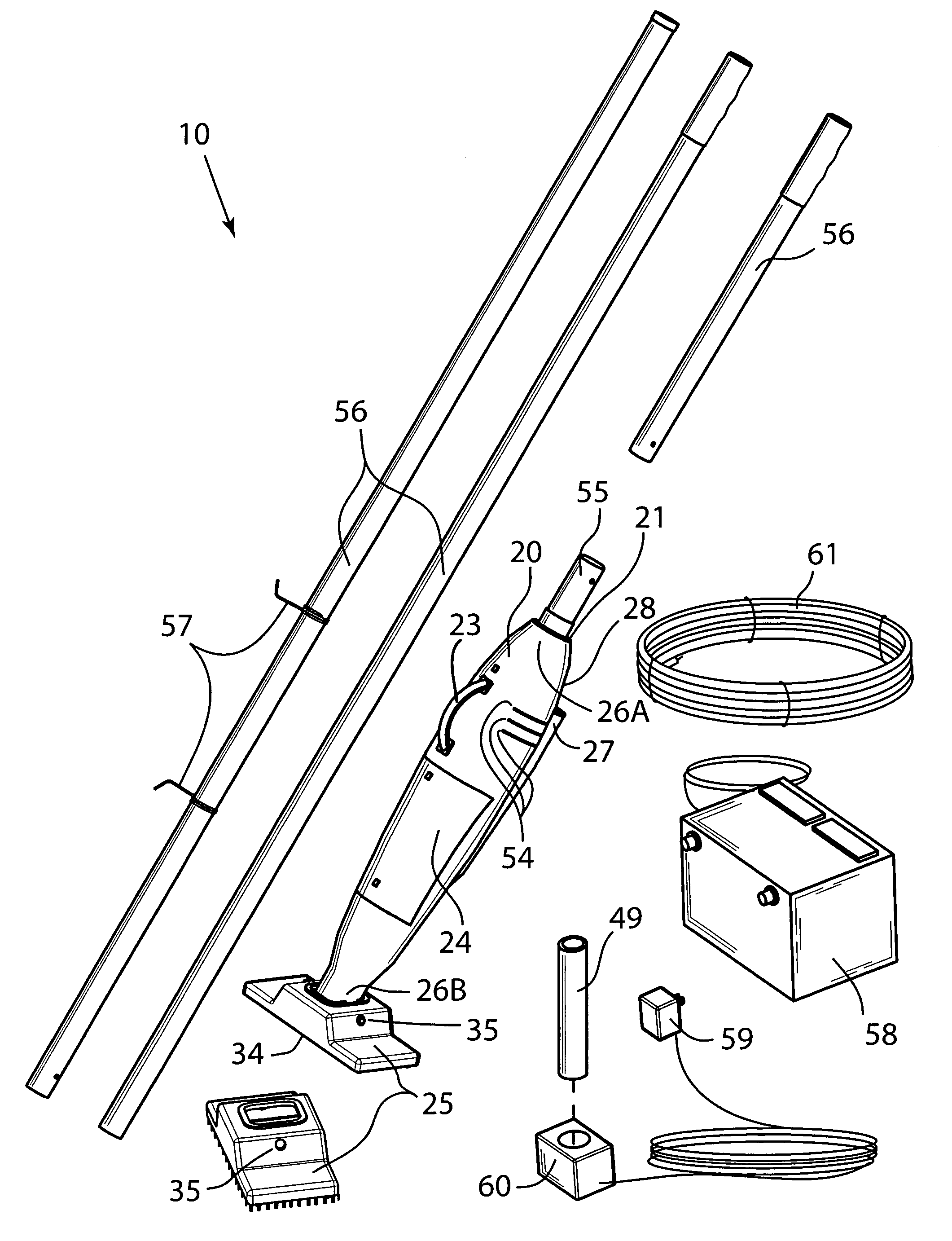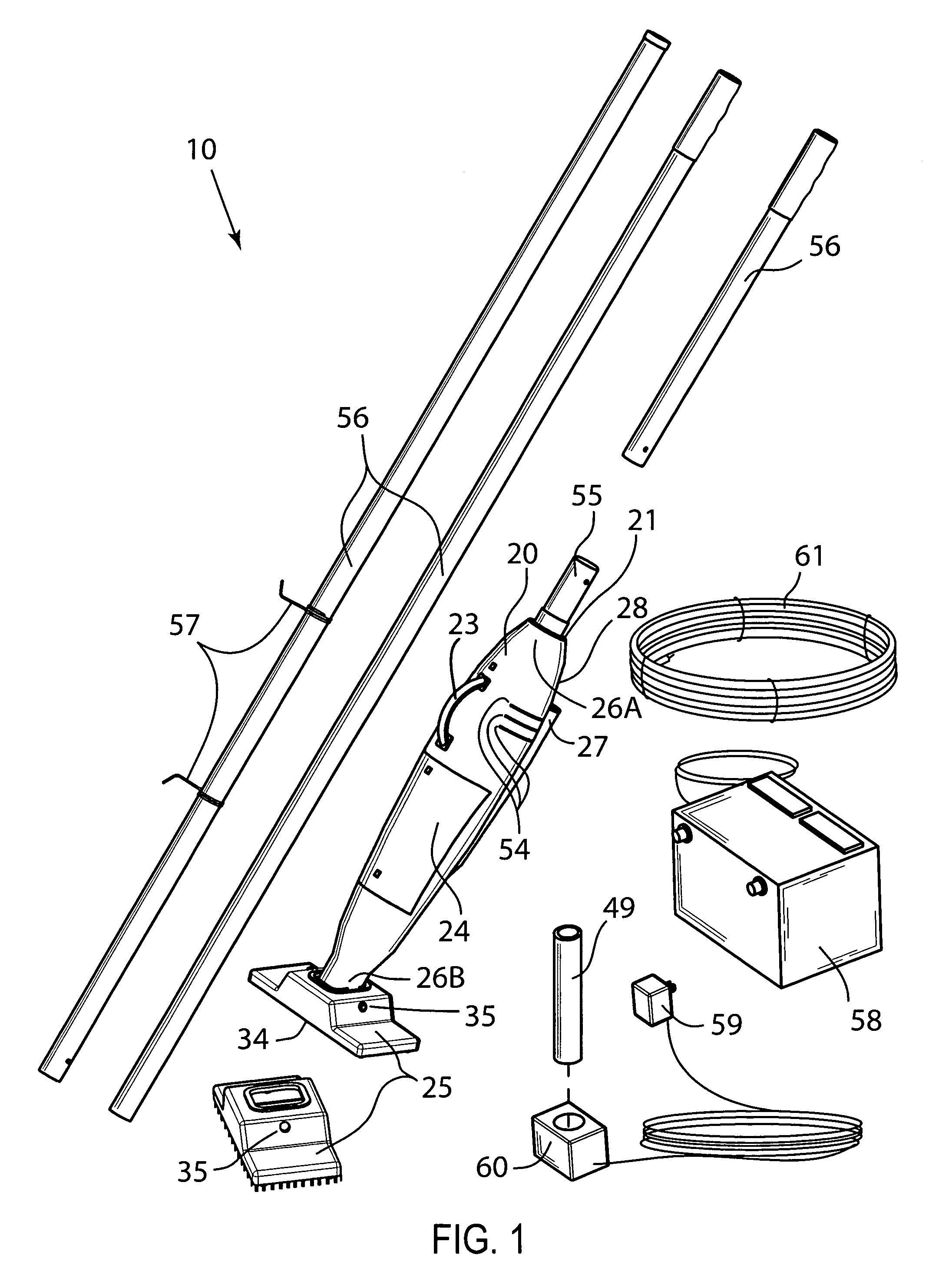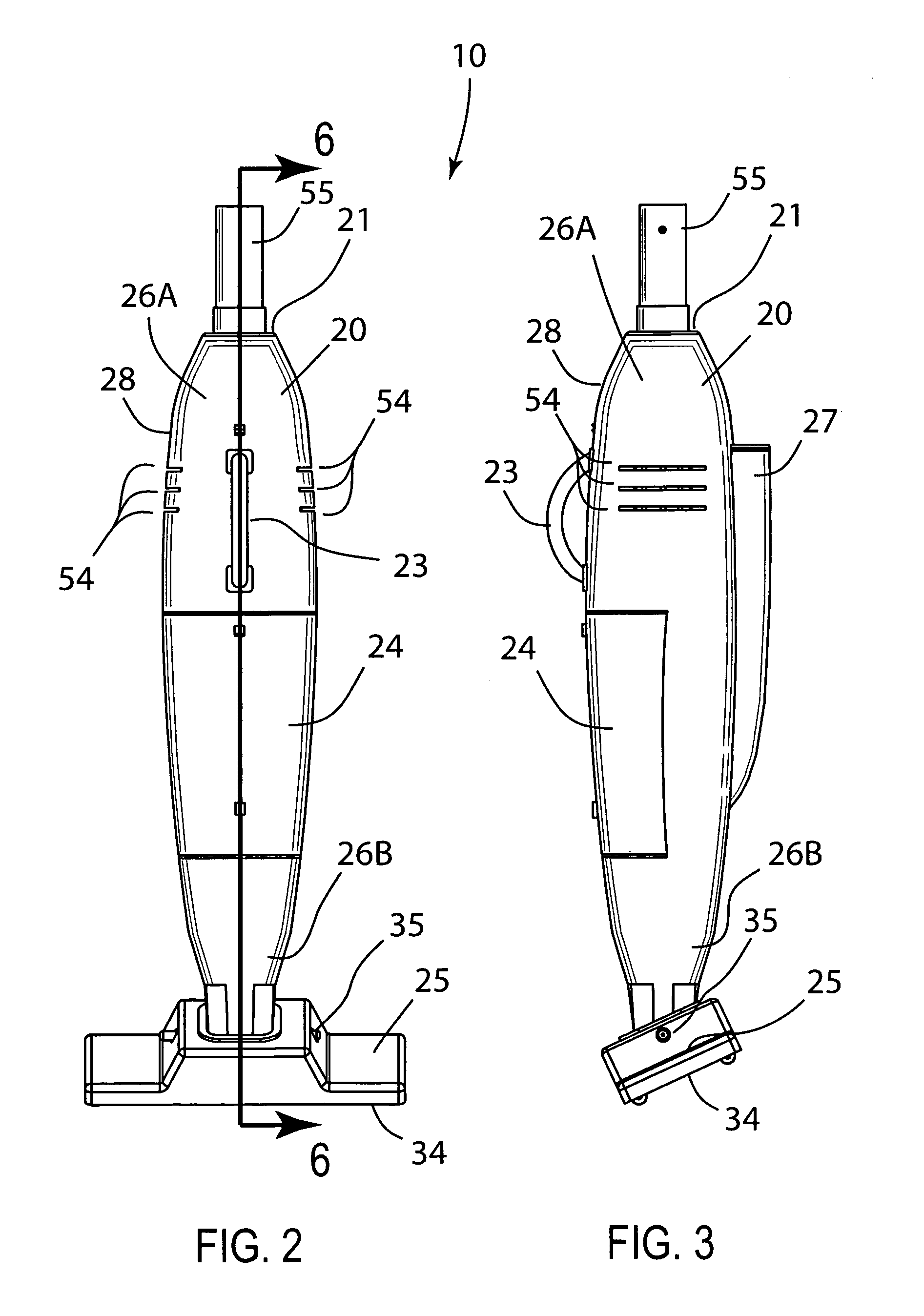Portable submersible cleaning device
a cleaning device and submerged technology, applied in the field of vacuum cleaning devices, can solve the problems of inconvenient use of suction type and education type cleaners, cumbersome vacuum head equipped with wheels, unbalanced brush strokes, etc., and achieve the effect of effectively removing angularly displaced debris, convenient introduction, and effective removal of displaced debris
- Summary
- Abstract
- Description
- Claims
- Application Information
AI Technical Summary
Benefits of technology
Problems solved by technology
Method used
Image
Examples
Embodiment Construction
[0034]The present invention will now be described more fully hereinafter with reference to the accompanying drawings, in which a preferred embodiment of the invention is shown. This invention may, however, be embodied in many different forms and should not be construed as limited to the embodiment set forth herein. Rather, this embodiment is provided so that this application will be thorough and complete, and will fully convey the true scope of the invention to those skilled in the art. Like numbers refer to like elements throughout the figures.
[0035]The device of this invention is referred to generally in FIGS. 1-8 by the reference numeral 10 and is intended to provide a portable submersible cleaning device. It should be understood that the device 10 may be used to clean many different types of aqueous environments and should not be limited to cleaning only those aqueous environments described herein.
[0036]Referring initially to FIGS. 1, 2, 3, 4, 5 and 6, the device 10 includes a h...
PUM
 Login to View More
Login to View More Abstract
Description
Claims
Application Information
 Login to View More
Login to View More - R&D
- Intellectual Property
- Life Sciences
- Materials
- Tech Scout
- Unparalleled Data Quality
- Higher Quality Content
- 60% Fewer Hallucinations
Browse by: Latest US Patents, China's latest patents, Technical Efficacy Thesaurus, Application Domain, Technology Topic, Popular Technical Reports.
© 2025 PatSnap. All rights reserved.Legal|Privacy policy|Modern Slavery Act Transparency Statement|Sitemap|About US| Contact US: help@patsnap.com



